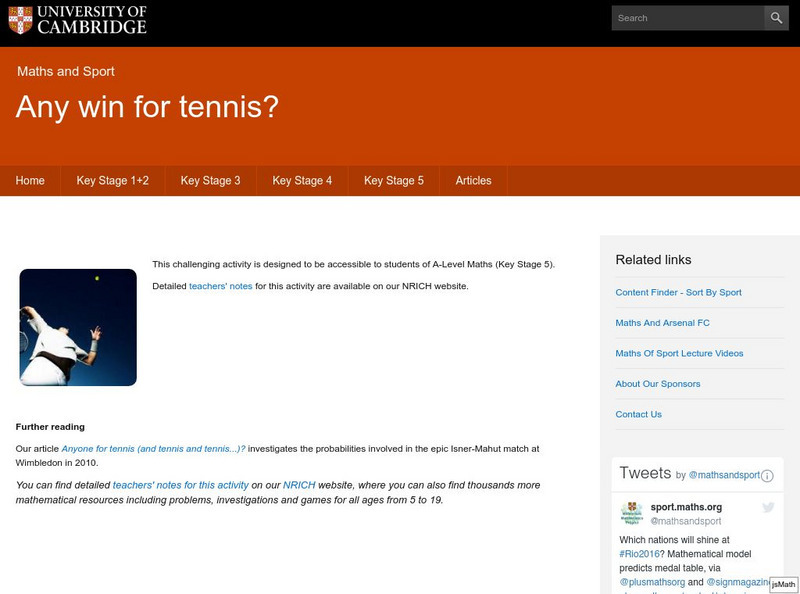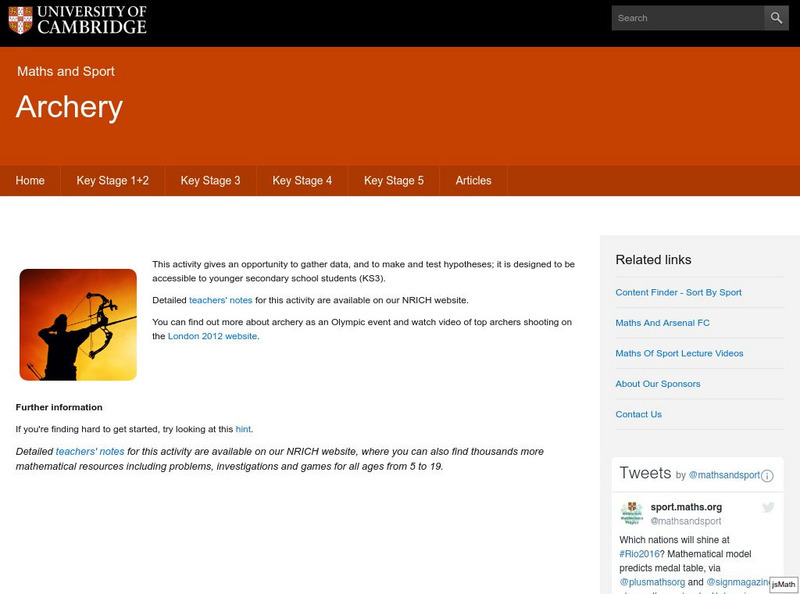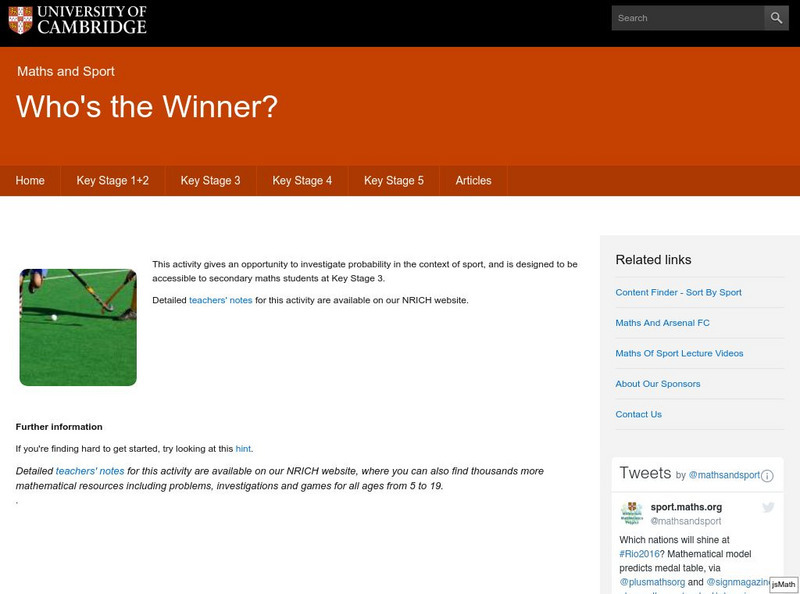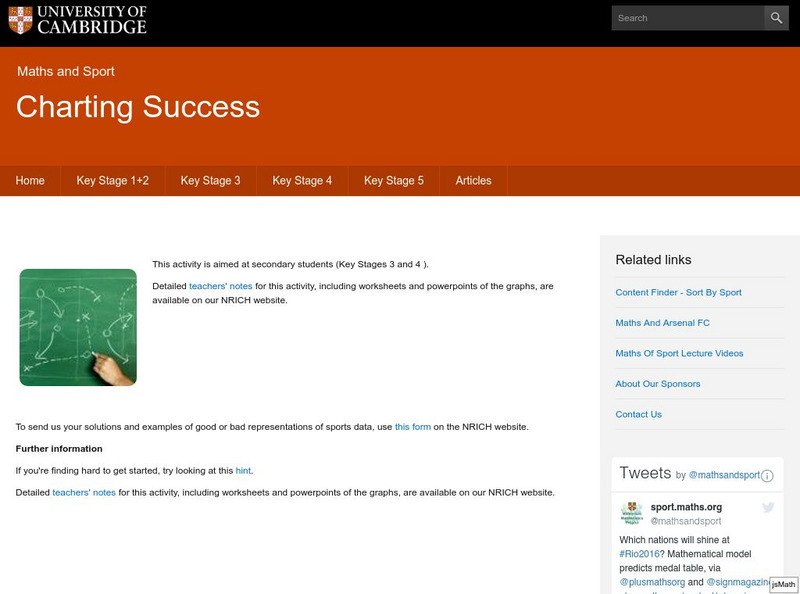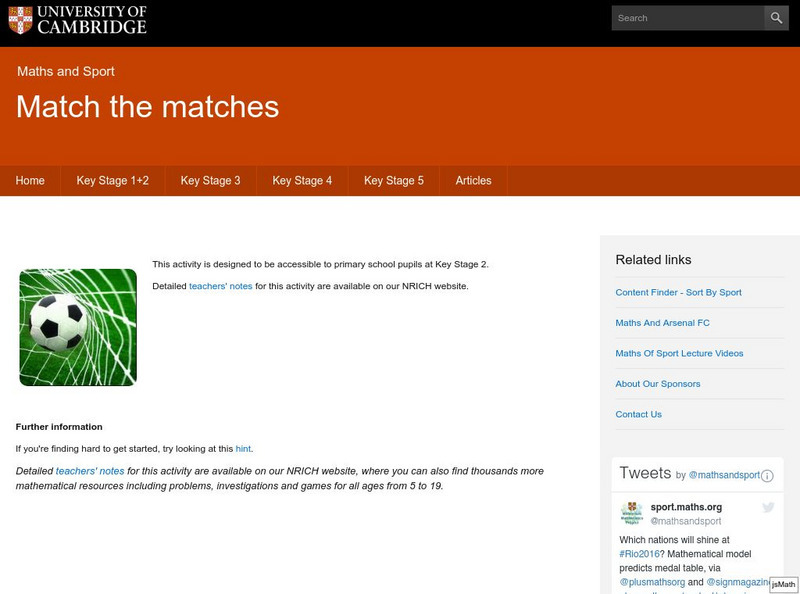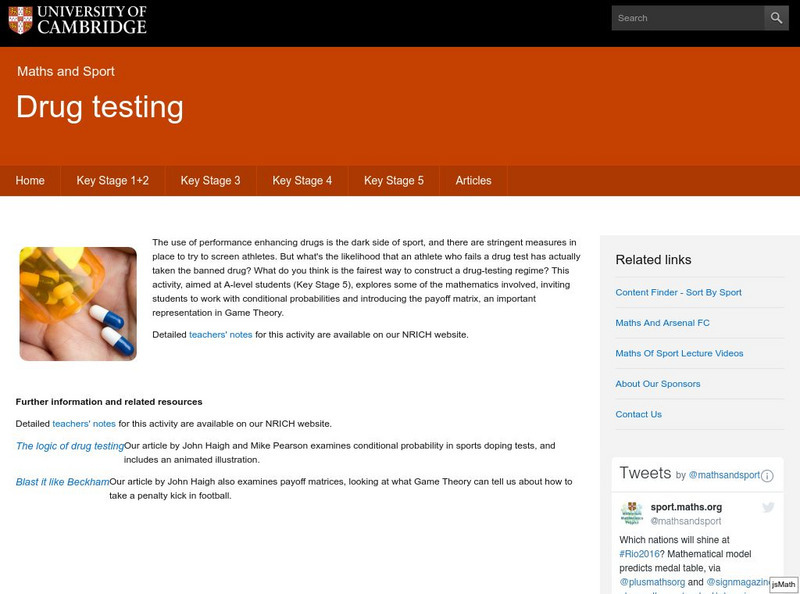Other
A River Runs Through It Learning Project
In this year long learning project integrating mathematics and science, students solve environmental problems using data collection and problem solving concepts. Designed for upper elementary gifted students. Interactive components and...
University Corporation for Atmospheric Research
Ucar: Project Sky Math
Teachers will be interested to explore the SkyMath module, and the 16 classroom activities at this site. In this program, students will collect and record real-time weather data to analyze. Data analysis, graphing, number relationship,...
University of Cambridge
University of Cambridge: Maths and Sports: Any Win for Tennis?
What are the probabilities of winning at tennis? This challenging activity is designed to be accessible to students of A-Level Maths (grades 10, 11, and 12).
University of Cambridge
University of Cambridge: Maths and Sports: Archery
Use our interactivity to simulate picking up a bow and some arrows and trying to hit the target a few times. Can you work out the best settings for the sight? This activity gives an opportunity to gather and collate data, and to test...
University of Cambridge
University of Cambridge: Maths and Sports: Who's the Winner?
If two goals are scored in a hockey match between two equally-matched teams, what are the possible scores? This activity gives an opportunity to investigate probability in the context of sport, and is designed to be accessible to...
National Council of Teachers of Mathematics
The Math Forum: Data Collecting Project Stats Class
This lesson plan provides the teacher with all the necessary handouts and directions to give a statistics class when they are ready to complete a thorough survey project. Broken into five parts, it takes the students through the...
University of Cambridge
University of Cambridge: Maths and Sports: Charting Success
Sports statisticians, trainers and competitors create graphs, charts and diagrams to help them to analyse performance, inform training programmes or improve motivation. This activity encourages students to consider and analyse...
University of Cambridge
University of Cambridge: Maths and Sports: Our Sports
What events are there in your school sports day, and in the Olympic Games? What are your favourite races and sports? This activity encourages discussion and decisions about how to collect and display data, and is designed to be...
University of Cambridge
University of Cambridge: Maths and Sports: Match the Matches
Decide which charts and graphs represent the number of goals two football teams scored in fifteen matches. This data handling activity is designed to get children talking meaningfully about mathematics, presenting and justifying...
University of Cambridge
University of Cambridge: Maths and Sports: Drug Testing
The use of performance enhancing drugs is the dark side of sport, and there are stringent measures in place to try to screen athletes. But what's the likelihood that an athlete who fails a drug test has actually taken the banned drug?...
University of Cambridge
University of Cambridge: Maths and Sports: What's the Point of Squash?
Squash isn't an Olympic sport (yet!) but it has an interesting scoring system. If you reach 8-all in a game of squash, when should you decide to play to 9 points rather than 10? This activity is a starting point for mathematical...
Alabama Learning Exchange
Alex: Dartboard Probability
In this lesson students will find probability of events presented in a geometric context. This lesson plan was created by exemplary Alabama Math Teachers through the AMSTI project.
Alabama Learning Exchange
Alex: It's in the Bag!
It's in the Bag will allow students to explore basic principles of probability. Students will investigation the likelihood of a certain color cube coming out of a bag. Then proceed to write word problems involving the plausible outcomes....
Alabama Learning Exchange
Alex: Misleading Graphs Are Da'pits!
In this interactive lesson, students will discover how creating an incorrect graph will display misleading information. Through viewing and discussing a variety of graphs, the students will identify 5 components that graphs must contain...


